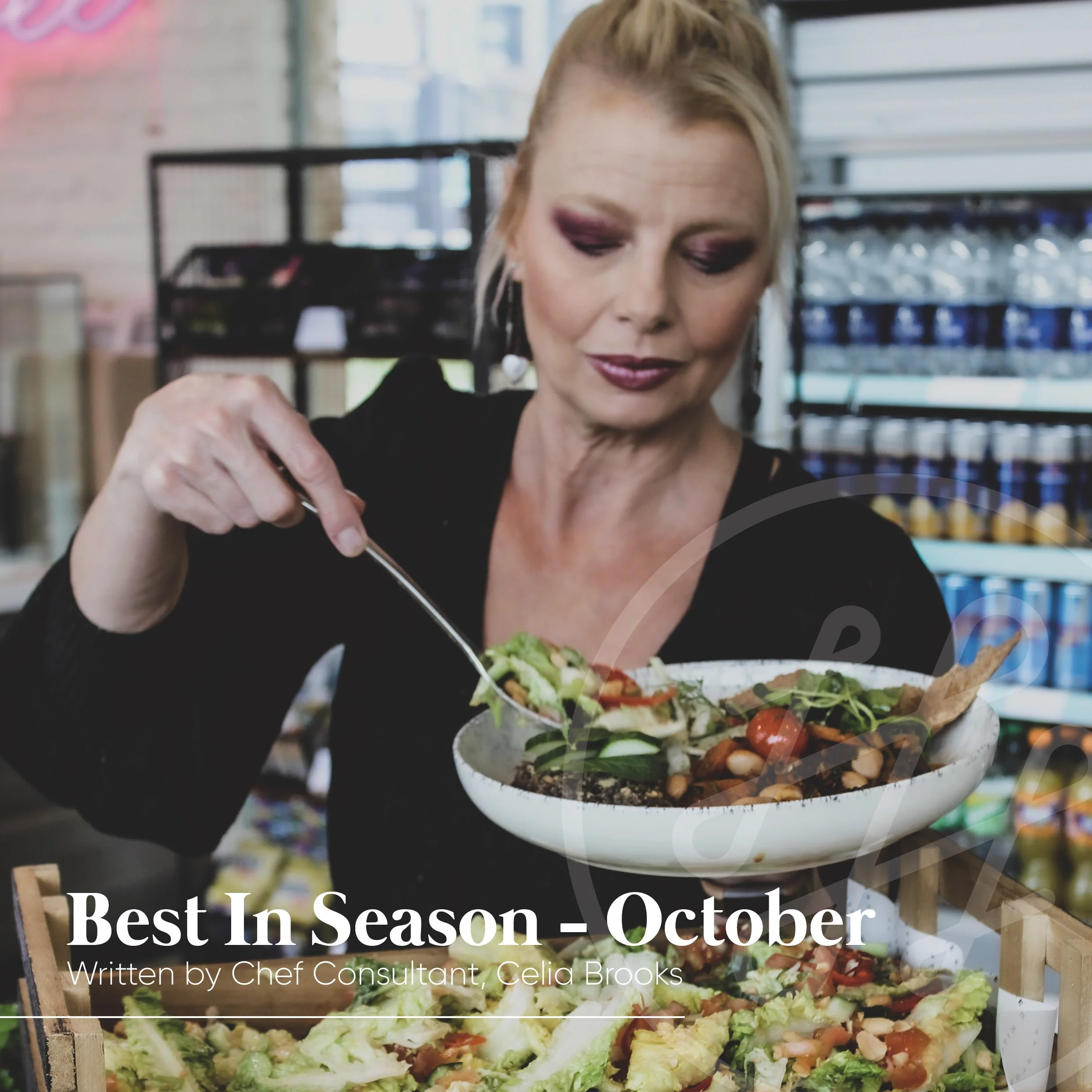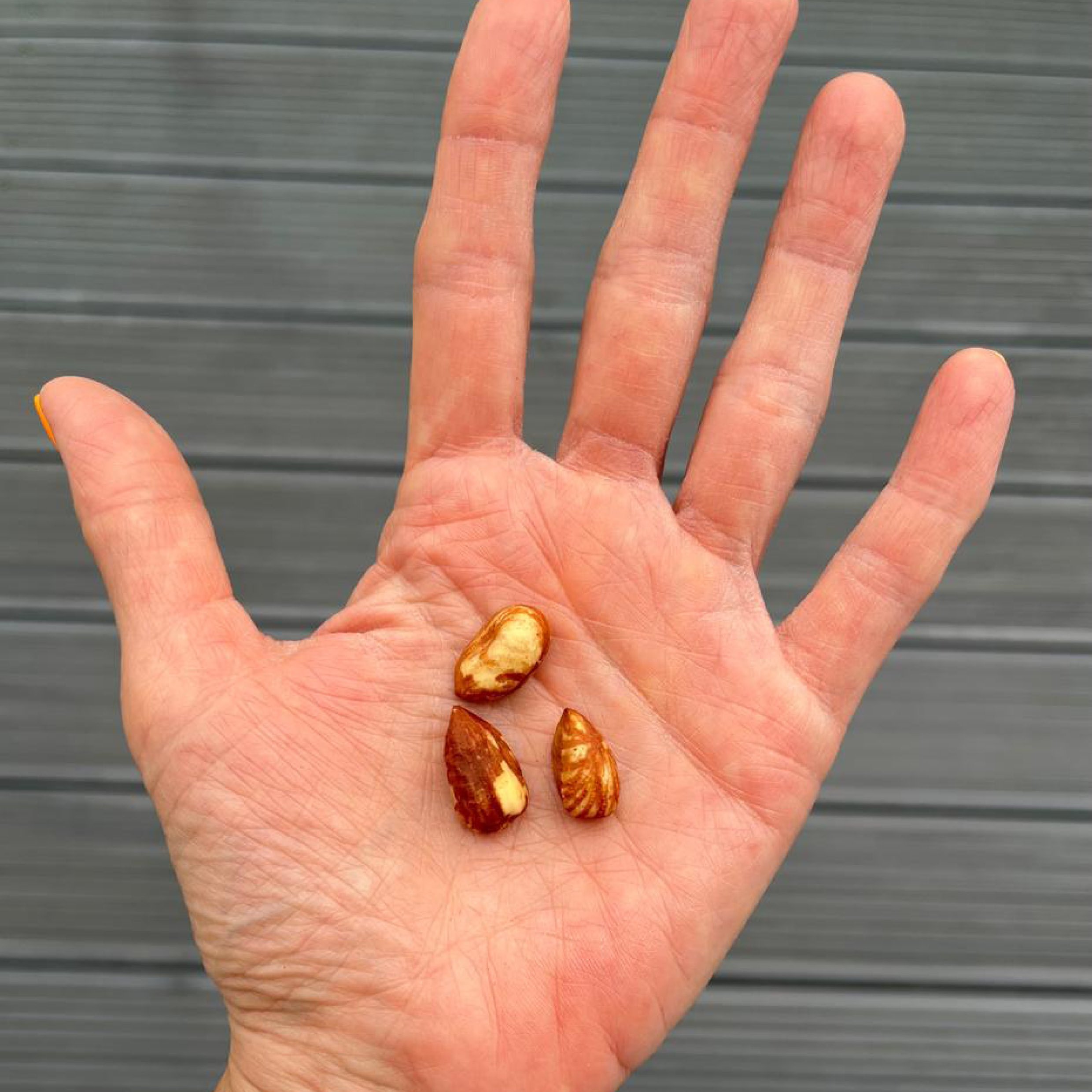Best In Season - October - written by Chef Consultant, Celia Brooks
The Ultimate English Nut
One of the most flavourful, nutritious, munchable, cookable, and versatile nuts on planet earth is native to and grown right here in the UK - the Kentish cobnut.
Weirdly, not many British people have even heard of them, let alone eaten them. I can attest to this lack of awareness, because I give them out regularly as a tasting on my Borough Market tours. I’d say about 70% of my British guests have never tried a cobnut. As soon as they do, they are astonished by their deliciousness and scramble to buy them by the bag.
Perhaps this is a little unfair - everybody knows hazelnuts, and cobnuts are just a native local variety of this ubiquitous nut. However, they taste like hazelnuts on steroids - intensely sweet and explosively flavourful. They look different too - more like a peanut or an almond, being tear-drop shaped rather than round.
Cobnuts are traditionally picked when green, and you can find them for sale, still green and in their shell, from August to October. You can crack them like any shelled nut and eat them fresh - they taste like fresh milky coconut. However, like all nuts, I think they taste best after being dried, shelled and roasted with a pinch of salt.
If you want to try the best, look no further than Food & Forest https://foodandforest.co.uk/, my supplier at Borough Market. They also sell them online and at a couple of other London food markets. Food & Forest grow cobnuts and walnuts in Kent in orchards (they are a fruit, after all) that are not only sustainable, but also employ the practice of agroforestry. Read all about this environmentally sound and rigorously forward-thinking type of farming on their website.
Although the naked roasted cobnuts could hardly get any better, F&F also sell them caramelised, and - wait for it - caramelised and then dipped in chocolate and rolled in cocoa powder. Now those little morsels are simply out of this world and currently my favourite confection of all.
Plain roasted cobnuts are scrumptious just nibbled out of a bowl in solitary splendour alongside a lager or a glass of wine, but of course you can use them in any recipe that uses hazelnuts. By using cobnuts as a truly exceptional ingredient, you will be rewarded with truly exceptional results. Try them ground to a powder and stirred through meringue before baking, whizzed into pesto or dukkah, or lightly crushed and sprinkled over muesli, desserts and salads.
Chicory & pear salad with blue cheese dressing
From “SuperVeg” by Celia Brooks
If there’s only one way you eat chicory, this should probably be it. Chicory and pears are perfect partners, and they both love blue cheese, so here I’ve appeased them both with mashed blue cheese thinned with vinegar and water to create the simplest sharp and creamy dressing imaginable, and jazzed up the party with crunchy toasted cobnuts (you can substitute hazelnuts). It all adds up to a bombshell of an autumn salad – fab on its own, or with a bowl of hot soup and bread.
Serves 4 / Prep 20 mins
Ingredients
150g blue cheese such as Stilton or Gorgonzola
1 tablespoon white wine vinegar
3 large heads chicory, cut into 2cm / 1 inch pieces
2 pears, cored and sliced, dressed with a squeeze of lemon juice
50g cobnuts or hazelnuts, toasted, coarsely chopped
freshly ground black pepper
handful of parsley, coarsely chopped
Method
1) To make the dressing, roughly crumble the blue cheese into a bowl and add the vinegar and about 2 tablespoons of tepid water. Mash it with a fork until amalgamated but still a little chunky. Add a little more water if necessary to make a thick, spoonable dressing.
2) Arrange the chicory on a platter or individual plates and top with the dressed pears. Spoon over the dressing, then scatter over the nuts. Finish with a few twists of black pepper and chopped parsley. Eat right away.



